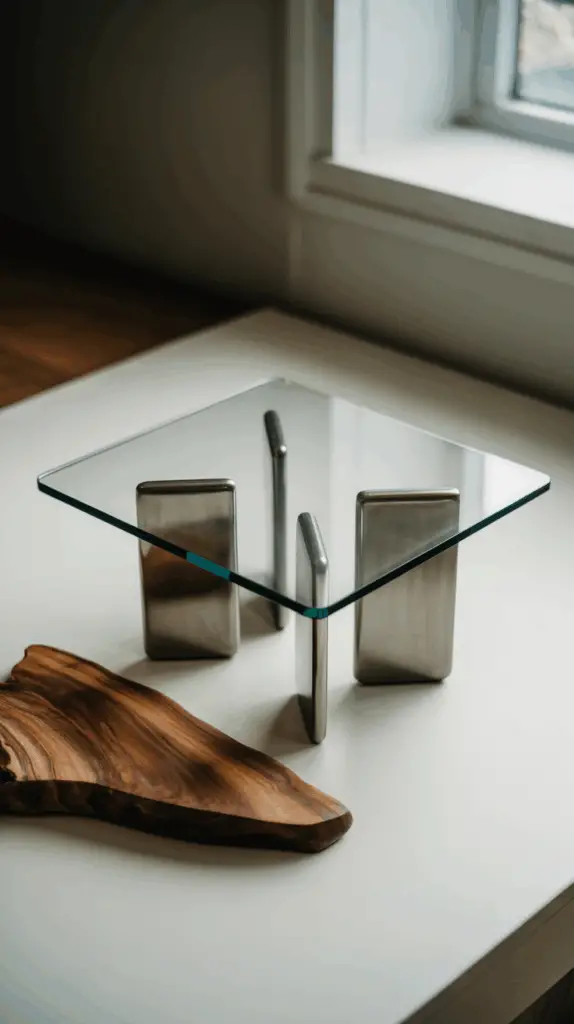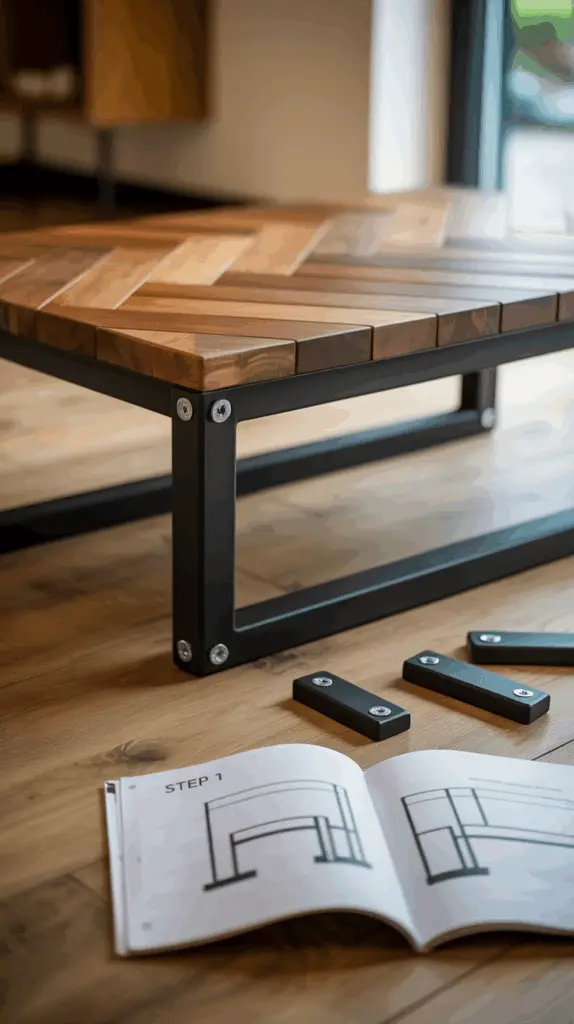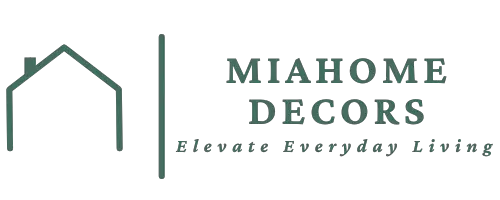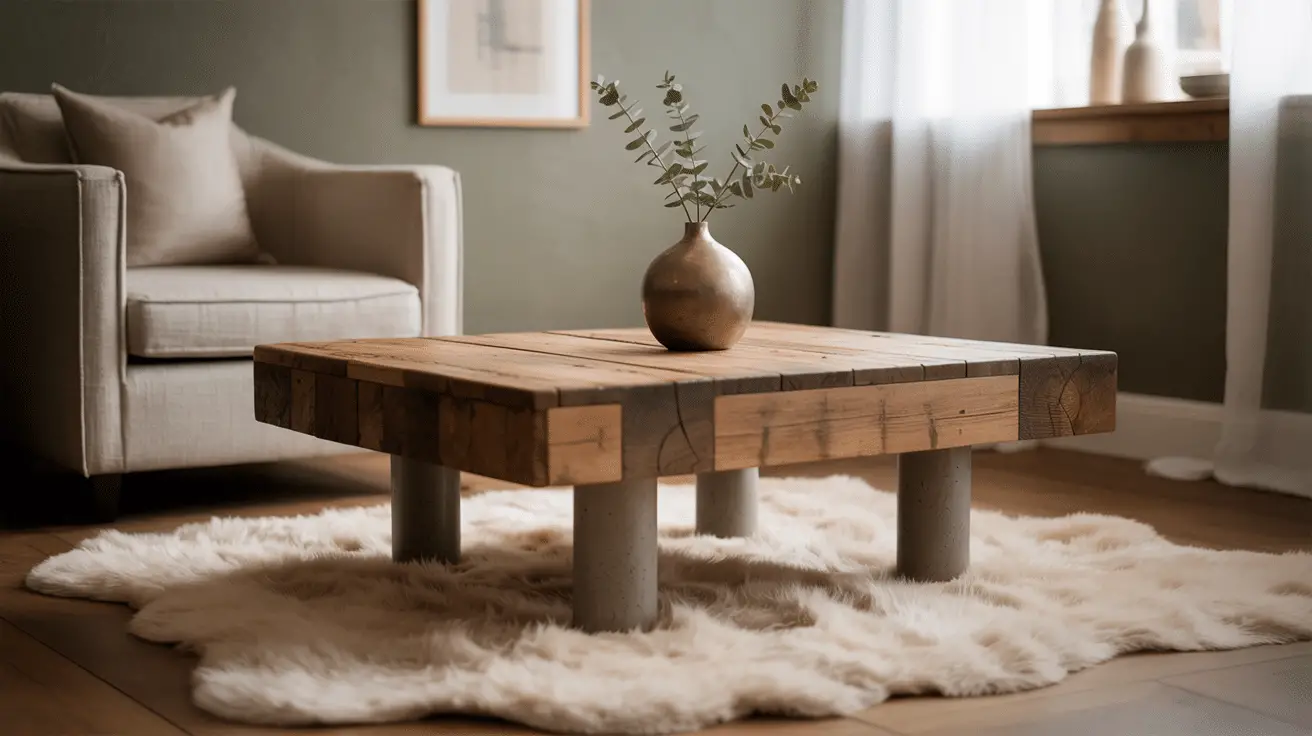Transform Your Living Room with a Stunning DIY Coffee Table: Step-by-Step Guide to a Personalized Touch
Table of Contents
Introduction
When it comes to designing a living room that reflects your personality, there are few pieces more impactful than the coffee table. It sits at the heart of the room, tying together furniture, decor, and the overall aesthetic. However, finding the perfect coffee table that combines style, function, and budget-friendliness can be challenging. What if you could craft your very own, tailored exactly to your vision?
DIY projects have surged in popularity because they allow for customization while saving money. A DIY coffee table is a fantastic way to not only create a unique focal point for your living room but also add a sense of accomplishment to your space. Whether you’re a seasoned crafter or a first-time DIYer, this project can be an enjoyable and fulfilling way to refresh your living room.
In this guide, we will walk you through the process of creating a stunning DIY coffee table. We’ll cover everything from selecting materials to designing your perfect piece and offer tips to ensure the project is both fun and successful. Let’s dive into the world of DIY coffee tables and transform your living room into a stylish haven!
Why a DIY Coffee Table?
A coffee table is more than just a functional item in your living room. It’s the centerpiece that brings together the entire design of the space. Here are a few reasons why you should consider creating your own DIY coffee table:
- Customization: With a DIY coffee table, you have complete control over its size, material, color, and design. Whether you want a rustic wood finish or a modern minimalist look, the options are endless.
- Cost-Effective: Pre-made coffee tables, especially high-quality ones, can be expensive. By making your own, you can achieve the same level of sophistication for a fraction of the price.
- Creative Expression: Building your own coffee table gives you the opportunity to showcase your craftsmanship and creativity. It’s an exciting way to personalize your space while learning new skills.
Step 1: Planning Your Coffee Table Design
The first step in creating your DIY coffee table is to decide on the design. The right design will complement the overall aesthetic of your living room while fulfilling your functional needs. Consider the following factors when planning:
- Style: Do you want something modern, rustic, industrial, or mid-century? The style of your coffee table should match the mood of the room.
- Material: Wood, metal, and glass are popular materials for coffee tables. Each has its own aesthetic appeal and maintenance requirements.
- Size and Shape: Make sure the size of the coffee table fits well in your space. Consider the shape (rectangular, round, square) based on the layout of your living room.
- Functionality: Will your coffee table need storage? Think about whether you want it to serve as a purely decorative piece or a functional one with extra shelves or drawers.
Table: Design Planning Checklist
| Design Aspect | Considerations | Notes |
| Style | Modern, rustic, industrial, traditional | Match with existing furniture and decor |
| Material | Wood, metal, glass, or mixed materials | Choose based on durability and aesthetic preference |
| Size & Shape | Rectangular, round, square | Ensure it fits comfortably in the room |
| Functionality | Storage options, open vs. closed storage | Will it serve as a functional piece as well? |
Step 2: Selecting Materials
Once you have a design in mind, the next step is choosing the right materials. Different materials can drastically affect both the look and functionality of your coffee table. Here are some popular options:
- Wood: Wood is a versatile material that offers a timeless, natural look. It’s perfect for rustic or traditional designs, and it’s relatively easy to work with for beginners.
- Metal: A metal coffee table provides an industrial, sleek look. It can add an element of modern elegance and works well for minimalist designs.
- Glass: If you prefer a light, airy feel, a glass top paired with metal or wooden legs can give the table a sophisticated, contemporary look.
- Reclaimed Materials: If you’re environmentally conscious, consider using reclaimed wood or repurposed materials for a sustainable and unique coffee table.
When selecting materials, consider the durability and maintenance. Wood, for example, can require regular polishing or sealing, while metal might be more prone to scratches or rust.

Step 3: Tools You’ll Need
A DIY coffee table project requires some basic tools and equipment. Whether you’re working with wood, metal, or glass, having the right tools will ensure a smoother, more efficient process. Here’s what you’ll need:
- Measuring Tape: For accurate measurements of your materials and table dimensions.
- Saw: If working with wood or metal, a saw will be necessary for cutting your materials to the desired size.
- Drill: A drill is essential for assembling the table and attaching legs, handles, or other features.
- Screwdriver: A power screwdriver will speed up the assembly process.
- Wood Glue: If you’re using wood, wood glue helps bond pieces together securely.
- Sandpaper: To smooth out rough edges and ensure a polished finish.
Before starting the project, ensure you have all your tools prepared and that you understand how to use them safely.
Table: Essential Tools for Your DIY Coffee Table
| Tool | Purpose | Recommended Use |
| Measuring Tape | To measure material sizes | Ensure precise dimensions for your table |
| Saw | Cutting wood, metal, or glass | Use for accurate cuts; different types for different materials |
| Drill | For assembly and attaching parts | Use with the correct bit for screws |
| Screwdriver | To fasten screws into place | Power screwdriver is ideal for quick assembly |
| Sandpaper | Smoothing edges and surfaces | Sand rough edges before finishing or painting |
Step 4: Step-by-Step Guide to Building Your Coffee Table
With your design and materials in place, it’s time to get to work! Here’s a step-by-step guide to help you build your DIY coffee table:
- Prepare Your Materials: Cut your wood or metal pieces according to the measurements you’ve planned. Sand all edges to ensure smoothness.
- Assemble the Base: If your design includes legs, attach them to the tabletop using screws or brackets. If you’re using metal legs, make sure they are securely fastened.
- Attach the Tabletop: If your design involves more than one piece for the tabletop, glue them together first, then screw them into place for additional stability.
- Finishing Touches: Sand the entire table once assembled. Apply your finish (paint, stain, or clear coat) and allow it to dry completely before use.
By following these steps carefully, you’ll be left with a durable and stylish coffee table that’s perfect for your space.

Step 5: Painting or Finishing Your Table
The finishing touches are where your DIY coffee table truly comes to life. Painting, staining, or varnishing your table adds personality and protects the material. Here’s what to consider:
- Staining: If you want to highlight the natural grain of wood, staining is a great option. Choose a light or dark stain based on your room’s decor.
- Painting: For a bold statement, opt for painting your coffee table. A matte black or navy blue can make a striking contrast against lighter furniture.
- Varnish or Polyurethane: To protect your table and give it a glossy finish, a layer of varnish or polyurethane will work wonders. It also helps the table last longer.
Allow the finish to dry thoroughly before placing anything on your new table.
Step 6: Styling Your New Coffee Table
Now that your coffee table is complete, it’s time to style it! A well-styled coffee table can elevate the entire room. Here are some tips for styling:
- Use a Tray: A decorative tray can help organize your items while adding an elegant touch. You can place candles, books, or small plants on it.
- Add Greenery: A small potted plant or succulent will bring life to the table, making it feel fresh and inviting.
- Incorporate Personal Items: Whether it’s family photos, a vintage book, or a decorative bowl, personal items can make your coffee table feel uniquely yours.
Remember to balance function with beauty—ensure your coffee table remains practical while still looking stylish.
Conclusion
Creating a DIY coffee table is a rewarding project that can breathe new life into your living room. With the right design, materials, and a little creativity, you can build a piece that fits perfectly into your space and reflects your unique style. Whether you’re aiming for rustic charm, industrial flair, or minimalist elegance, a DIY coffee table can be both a functional and decorative centerpiece in your home. Enjoy the process, and let your creativity shine as you transform your living room with a stunning, personalized coffee table!

